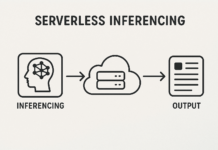Riders have a lot of options in crash protection. Shopping for motorcycle gear can be fun, but it’s easy to feel overwhelmed by all the choices. That’s especially true with motorcycle helmets, with literally thousands of models to choose from. Maybe you’ve browsed cruiser open face helmets and were impressed by their distinct styles and features, but you’re wondering if they’re safe. You don’t need a Ph.D. to understand motorcycle helmets, but a quick review of styles and safety features can be helpful.
Common Motorcycle Helmet Types
You may already know the four basic motorcycle helmet styles: full face, modular, open face and half helmets. Besides these, many powersports dealers also carry dual-sport and off-road helmets. You might see the off-road versions labeled as “dirt bike helmets,” since they’re made mostly for dirt riding. Nearly all helmet types include a few basic comfort, safety and performance features such as strong and lightweight exterior shells, shock-absorbing EPS liners, and interior moisture control linings. Many full face, modular and open face models have integrated ventilation systems to help keep riders cool.
Each helmet type reflects key differences in design. With a completely closed construction and integrated face shields, full face helmets cover the entire head and face from the forehead to past the chin. Open face helmets have a similar shape to full face models, but they don’t include bottom chin bars that cover the chin and mouth region. These versions include padded chin straps that secure them onto the head, and many models come with visors included or offer them separately. Half helmets leave the face exposed by covering only the top of the head, but several models automatically come with partial face shields. Modular helmets use the basic construction of the full face editions but integrate a hinge that allows the chin bar and visor to flip up.
Helmet Technologies and Safety Ratings
Manufacturers strive to make helmets as lightweight, durable and protective as possible. For instance, some carbon fiber dirt bike helmets have outer shells containing a blend of carbon and Kevlar, a super-strong and heat-resistant synthetic fiber that’s also very lightweight. Other key protective features include EPS liners and MIPS technology, included in many dirt bike helmets to reduce rotational energy transfers and cut back on injuries.
The U.S. Department of Transportation, the Economic Commission for Europe and the Snell Foundation issue motorcycle helmet safety ratings. DOT certification requires that a helmet pass impact, penetration and retention tests twice. The ECE’s and Snell Foundation’s tests are more extensive by comparison. In the United States, helmets have to meet DOT certification standards to be street legal. Although open face helmets don’t offer as much coverage as the full face editions, they still offer good crash protection. Models like Bell’s Custom 500, for instance, meet or exceed both DOT and ECE certification standards.
A Proper Fit Is Essential
Choosing the right helmet style is key. But to provide solid crash protection, it must fit properly. Pay attention to smart tips for how to size a motorcycle helmet, which includes determining your head shape and size. If shopping online, make sure your powersports dealer has a solid return and exchange policy.
























































